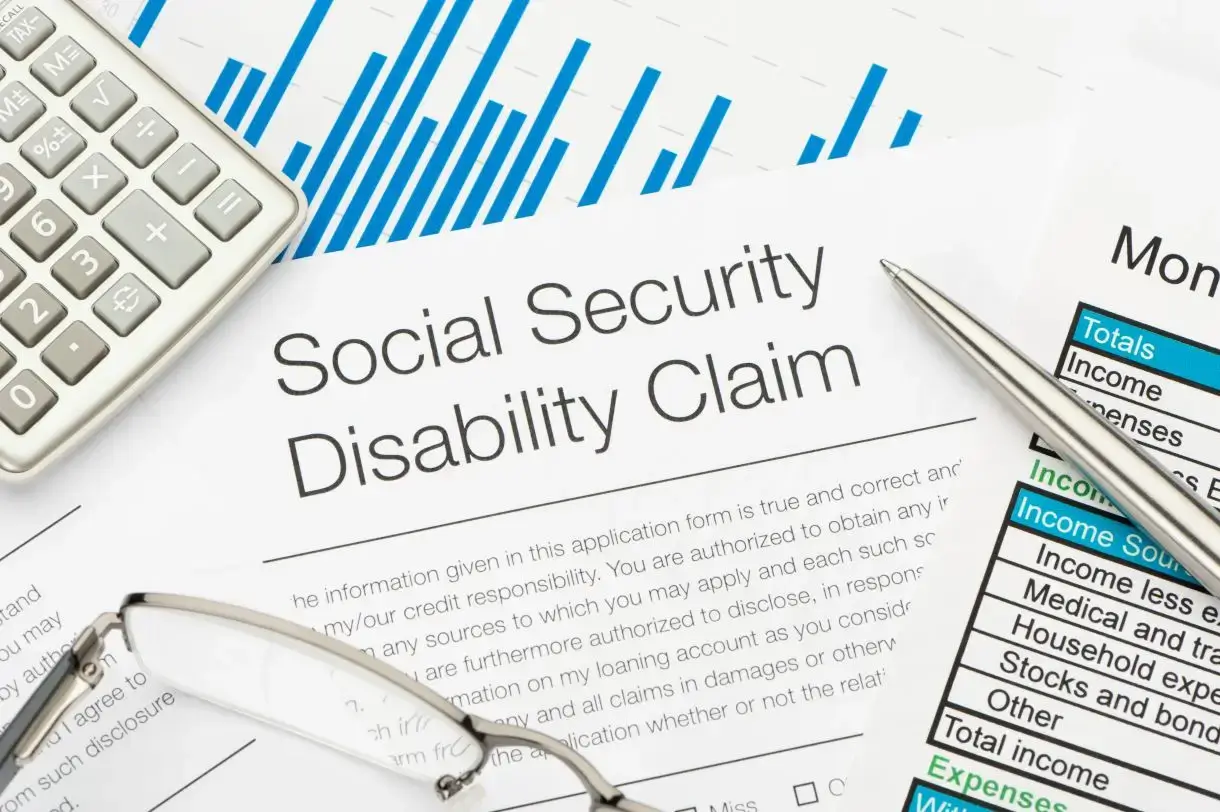If you’ve thought that the only way to get disability benefits is to suffer from a physical injury or condition, you’re wrong. Mental health issues can also qualify for disability. In fact, if you qualify, you can receive borderline personality disorder disability benefits.
Borderline Personality Disorder is only one of myriad mental health conditions that qualify for disability benefits. According to statistics, in 2019 more than 2 million people received disability benefits for a mental health issue. Can you get disability for BPD? Here’s what you need to know about getting financial assistance for your disorder.
What is Borderline Personality Disorder (BPD)?
Borderline Personality Disorder (BPD) is a complex mental health condition characterized by unstable emotions, self-image, and interpersonal relationships. Individuals with BPD often experience intense mood swings, impulsivity, and a pervasive fear of abandonment. They may exhibit patterns of idealization and devaluation towards others, oscillating between extremes of admiration and disdain.
Additionally, individuals with BPD frequently struggle with identity disturbance, feeling uncertain about their values, goals, and sense of self. These symptoms can significantly impact various aspects of life, including work, relationships, and overall daily functioning. Despite its challenges, with appropriate therapy and support, individuals with BPD can learn to manage their symptoms and lead fulfilling lives.
How Common Is Borderline Personality Disorder?
Borderline personality disorder is more common than both schizophrenia and bipolar disorder. Experts estimate that more than 14 million people in America have borderline personality disorder. Like other mental health disorders, studies are sometimes lacking. More recent studies show that the disorder likely affects genders equally. But because doctors test men less often for the disorder, the actual numbers are difficult to pinpoint.
There are four types of borderline personality disorder: discouraged borderline personality disorder, impulsive borderline personality disorder, petulant borderline personality disorder and self-destructive borderline personality disorder. Each of these has its own set of challenges and each presents differently.
Is Borderline Personality Disorder a Disability?
The Social Security Administration (SSA) uses criteria in what’s called a Blue Book to determine if a disorder or illness is a disability. In the case of borderline personality disorder, the answer is that yes, the SSA recognizes personality disorders in its Blue Book. The agency considers BPD a disability.
Therefore, depending on the severity of your symptoms, you may qualify for Social Security disability benefits for BPD.
How to Qualify for Borderline Personality Disorder Disability Benefits
The SSA looks not only at that condition, but whether that condition or its symptoms prevent someone from working. Which means that if you have borderline personality disorder, the following may keep you from qualifying for SSD benefits:
- You manage your symptoms with medication, therapy, or some other means
- Your symptoms aren’t severe enough to cause problems at work or stop you from working for long periods
However, individuals with borderline personality disorder often have issues that make it difficult or impossible for them to work. For this reason, the SSA may still approve claims for disability due to borderline personality disorder (BPD).
For example, someone with petulant borderline personality disorder may exhibit behaviors such as extreme mood swings, impatience and irritability, and aggressive behavioral outbursts. Sometimes, these behaviors are severe enough that they cause problems working and interacting with others. In such cases, there is a chance that this person could receive disability benefits.
How to Prove Your BPD Symptoms for Disability Benefits
One challenge in qualifying for disability payments with a mental health disorder is it’s often invisible to others. It’s not obvious, like a broken leg or traction for a bad back. Mental health issues are often only visible to loved ones and close friends. Some people may refuse an official evaluation. Other might even hide their behavior as best as they can because they feel shame about their mental illness. All of these issues make it more difficult to receive a diagnosis or qualify for disability benefits. In fact, they leave some people wondering if you can get disability for BPD at all.
Fortunately, the following documentation can make it easier to secure benefits for Borderline Personality Disorder:
- Keep a diary of your BPD symptoms
- Seek medical evidence and work with doctors to improve your symptoms
- Keep documentation of therapy, medications tried, bloodwork, and other treatment notes
- Complete a mental residual functional capacity form that assesses your mental functioning and limitations
- Document your successful and unsuccessful attempts at work in the past
- Document any comorbid disabilities, other personality disorders, and mental illnesses you may have that complicate your condition
Get Copies of Your Medical Records

To get borderline personality disorder disability benefits, it’s imperative that your medical records link the behaviors directly to mental illness. This evidence can include:
- CT scans
- Bloodwork
- Treatment notes from both doctors and therapists
- hospitalization dates
- Prescription drug records
Keep a Symptoms Diary
Keeping a diary can also help. This diary should include everything from notes about medical and therapy appointments to how you handle daily situations like housework, interactions with family and co-workers, how you spend your non-work time, and how you generally move in the world.
Complete a Mental Residual Functional Capacity Form
The best evidence you can present is something called a mental residual functional capacity form. This is a form that documents the tasks that you can do regularly despite your mental health issues. More specifically, it helps the SSA determine whether you can continue to perform job tasks. This form might help the SSA understand if you can complete tasks in a timely way, make basic judgment calls and decisions, if you are punctual, whether you can get along with co-workers, and if you distract others, among other extreme limitations.
Document Any Comorbid Conditions
Another thing to remember is that 62% of the people who collect disability benefits today listed more than one condition on their application. Listing more than one can significantly improve your odds of getting disability benefits for borderline personality disorder.
If the SSA determines that you are limited in certain areas to the extent that it prevents you from working, disability benefits would likely be awarded.
BPD Symptoms and Related Medical Conditions That Can Help Support Your Claim
Borderline personality disorder typically presents with other diseases and disorders. This is called comorbidity. Often when doctors diagnose people with borderline personality disorder, they also diagnose them with depression and anxiety. Common BPD comorbidities include:
- Depression or other mood disorders (96%)
- Anxiety disorders (88%)
- Substance abuse (50%-65%)
- Panic disorders (34%-48%)
- Posttraumatic stress disorder (47%-65%)
- Eating disorders (7%-26%)
Listing each of these issues in a disability benefits application can increase the chances of approval, as it shows the Social Security Administration the full extent of your disorder’s complexity.
Because some or many of the behaviors that manifest with borderline personality disorder, anxiety and depression can make it difficult or impossible to hold a job, presenting evidence of each medical condition can strengthen the application in the eyes of the SSA.
Also, because each person presents differently with these issues, the treatments for each person are different. Those treatments may or may not affect whether that person can work or should be awarded disability benefits.
How Hard Is it to Get Disability for BPD?
A 2009 study indicated that if a person hasn’t gone to school or worked at least 50% of the time in the past two years, doesn’t have at least one close friend or a good relationship with a romantic partner and undergone inpatient treatment at a hospital or other facility for symptoms of borderline personality disorder, statistics say they’re more likely to receive disability compared to people without those traits.
A follow-up study in 2023 indicated that people with borderline personality disorder were three times more likely to have received Social Security Disability Insurance (SSDI) short-term while those with other mental health disorders, such as obsessive-compulsive disorder or a panic disorder, did not.
If a person is homeless and that homelessness is a direct result of their borderline personality disorder, then that can also strengthen a disability benefits application.
Another factor that increases the chance of being awarded disability benefits for borderline personality disorder is working with an attorney. A Government Accountability Office (GAO) study shows that people who hire an attorney before filing their disability application are three times more likely to be awarded benefits on their first try.
Medical Evidence You’ll Want To Submit With Your BPD Disability Claim
Medical evidence will be vital to your disability application. Notes from your physician and therapist, evidence of how your borderline personality disorder makes it difficult to work (from both you and your employer and/or co-workers), statements from people who are close to you in your everyday life, and various tests will all increase your chances of getting disability insurance.
How to Apply for Borderline Personality Disorder Disability Benefits

There are two programs you can apply to when applying for borderline personality disorder disability benefits: SSI and SSDI.
Social Security Disability Insurance (SSDI) is a program that requires a qualifying work history. It also requires that your mental illness (and/or comorbidities as discussed above) will prevent you from working for at least 12 months. In order to qualify for SSDI you cannot be receiving any other social security benefits, including retirement, and you must earn less than $1,550 per month if you’re sighted and $2,590 if you’re blind.
Supplemental Security Income (SSI) does not require a work history at all. It does require that you have little to no income or resources and that you are blind, disabled, or at least 65 years old.
If applying for SSDI, you want to be sure that you have enough work credits to qualify. You have to have worked in a job that collected FICA taxes for a certain amount of time, or you will not qualify. If you work for tips, you likely do not qualify. The same is true if your job provides a pension-based retirement plan or if you’re self-employed. If you are unsure, you can call the Social Security Office during normal business hours and speak to an agent.
You can apply for disability benefits through the SSA website, in person at the local SSA office, or over the phone.
How to Get Free Expert Help Filing Your BPD Disability Claim
It’s beneficial to have someone on your side who knows the ins and outs of the SSA disability program. Having a lawyer file your application makes you 3x more likely to get SSD benefits right away, while those who file on their own without legal assistance usually wait up to two years for their first disability payment. Let us match you with a disability lawyer who can provide a free, no-obligation claim review and help you with your case.
Ready to see if you qualify? Click the button below to start your free online benefits evaluation now!
Get Your Free Benefits Evaluation
Lisa Allen is a writer and editor who lives in suburban Kansas City. She holds MFAs in Creative Nonfiction and Poetry, both from the Solstice Low-Residency Program in Creative Writing at Pine Manor College. Prior to becoming a writer, Lisa worked as a paralegal, where she specialized in real estate in and around Chicago.

